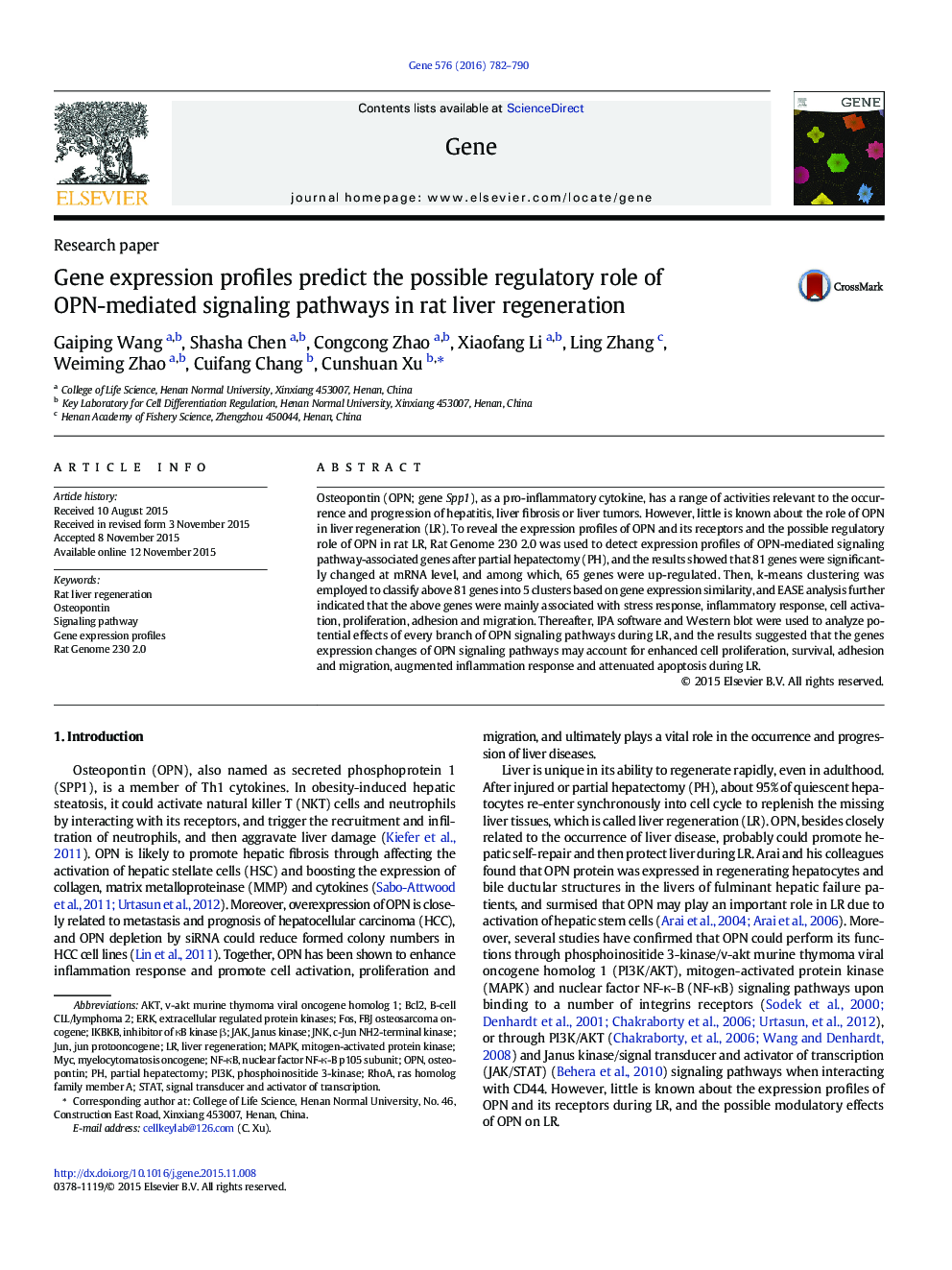| Article ID | Journal | Published Year | Pages | File Type |
|---|---|---|---|---|
| 2815219 | Gene | 2016 | 9 Pages |
•The interaction network of OPN signaling pathways was systematically constructed.•Expression profiles of OPN signaling pathway-related genes were detected during LR.•OPN signaling may be account for the changes of several biological processes in LR.•This work enriched our knowledge of the possible roles of OPN signaling during LR.
Osteopontin (OPN; gene Spp1), as a pro-inflammatory cytokine, has a range of activities relevant to the occurrence and progression of hepatitis, liver fibrosis or liver tumors. However, little is known about the role of OPN in liver regeneration (LR). To reveal the expression profiles of OPN and its receptors and the possible regulatory role of OPN in rat LR, Rat Genome 230 2.0 was used to detect expression profiles of OPN-mediated signaling pathway-associated genes after partial hepatectomy (PH), and the results showed that 81 genes were significantly changed at mRNA level, and among which, 65 genes were up-regulated. Then, k-means clustering was employed to classify above 81 genes into 5 clusters based on gene expression similarity, and EASE analysis further indicated that the above genes were mainly associated with stress response, inflammatory response, cell activation, proliferation, adhesion and migration. Thereafter, IPA software and Western blot were used to analyze potential effects of every branch of OPN signaling pathways during LR, and the results suggested that the genes expression changes of OPN signaling pathways may account for enhanced cell proliferation, survival, adhesion and migration, augmented inflammation response and attenuated apoptosis during LR.
